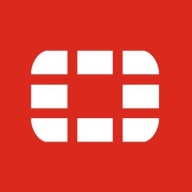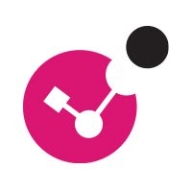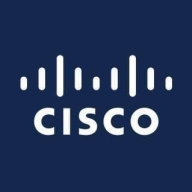


Check Point CloudGuard Network Security and Cisco Catalyst SD-WAN compete in the network security and SD-WAN management categories, respectively. Cisco Catalyst SD-WAN appears to have the upper hand due to its extensive features, making users feel it is worth the price.
Features: Check Point CloudGuard Network Security offers advanced threat prevention, seamless integration, and comprehensive visibility. Cisco Catalyst SD-WAN provides robust performance, scalability, and advanced analytics. Cisco Catalyst SD-WAN leads in feature set, particularly in performance and scalability, appealing to larger enterprises.
Room for Improvement: Check Point CloudGuard Network Security needs to improve its reporting capabilities, ease of use, and user documentation. Cisco Catalyst SD-WAN users indicate a need for better user documentation, enhanced technical support, and more intuitive management tools.
Ease of Deployment and Customer Service: Check Point CloudGuard Network Security is praised for straightforward deployment and responsive customer service. Cisco Catalyst SD-WAN has mixed reviews regarding deployment complexity but is commended for high-quality support.
Pricing and ROI: Check Point CloudGuard Network Security is viewed as cost-effective with a good ROI due to lower setup costs and extensive features. Cisco Catalyst SD-WAN, although more expensive, delivers a higher ROI through its feature-rich and scalable solutions, justifying the investment for larger organizations.
Clients are now comfortable and not wasting productive hours on IT support.
The automation part is giving us a cost benefit and speed; we can react faster.
It's a very useful tool to mitigate and protect your enterprise.
The value lies in maintaining operational integrity with zero downtime or incidents, facilitating secure, ongoing business operations.
Implementing CloudGuard has resulted in an excellent return on investment over one hundred percent ROI.
The unified policy is comprehensive and helps me to create firewall policies that are shared across all our facilities and plants.
They are now back to do that with the remainder of their company, so they've realized the value in 12 months and are willing to invest in the remainder of their organization.
They offer very accurate solutions.
The quick resolution of issues with Fortinet FortiGate is due to the support of the company and the fact that the equipment is easy to work with.
I would rate the technical support for Fortinet FortiGate a ten out of ten.
They usually respond quite fast, and they are very knowledgeable about what they do.
We had an endless loop of emails trying to fix this, and the suggestion was to reinstall the gateway and do it from scratch, which was not an option at that point because it would leave that specific location without access.
Available twenty-four by seven.
The principal third-level support is very good.
I would consider Cisco support a 10 out of 10.
I would rate Cisco's support, their customer service, and technical support as excellent.
They scale up really well from smaller models like the FortiGate 40 and 50 to bigger sites with the FortiGate 100 for more throughput - up to enterprise datacenters.
The variation comes in terms of the interfaces and throughputs, but from a security perspective, you get the same benefit, irrespective of whether you have an entry-level unit or an enterprise.
We determine sizing based on multiple factors: number of users, available links, traffic types, server count, services in use, and whether services will be published.
I can deploy it everywhere I need it.
We have transitioned from 1,000 to 500 users without any issue.
We perform minor and major upgrades, and it works seamlessly.
Cisco SD-WAN is highly scalable and can be expanded to more than 10,000 sites.
The ease of configuration and features like zero-touch provisioning enhance the scalability of Cisco SD-WAN, especially in disaster recovery situations.
We're experiencing 99.999% availability consistently.
I would rate the stability of Fortinet FortiGate a ten out of ten.
Currently, we are experiencing a general outage of one of the main internet service providers of the Dominican Republic, and we have not been impacted in our operations because with SD-WAN, we have another internet service provider and we are working with the second WAN connection without any disruption.
I have not observed any downtime.
For instance, when we are working on a release and do an upgrade, we start experiencing unexpected issues.
The solution is stable.
While some software-related issues and bugs were encountered, they did not cause the whole environment to crash.
Investing in a solution that can accommodate such growth would be more cost-effective than repeatedly purchasing new hardware.
While Fortinet claims to offer a comprehensive network solution, it falls short in addressing computer application issues, particularly server security.
When considering Sophos XG, which we also use, the logging and reporting functionality is notably more efficient.
Scalability could be improved as well; needing to purchase a new license each time I want to add a new interface is not ideal.
Better documentation would be welcome.
The user interface could be more intuitive, and the initial setup and configuration can be complex, requiring a technical team.
Now, they change frequently, making it difficult to obtain long-term support.
Including more features like integrating with Splunk for monitoring vulnerabilities would help eliminate the need for other SOC solutions.
The negative, or the downside of Cisco is the knowledge base; you need to be a little bit more tech-savvy and network-savvy to work with Cisco, while Juniper is a lot more user-friendly from what I can see, especially in terms of configuration and any kind of roll back.
Last year, I renewed the support for three years, which can sometimes be expensive but depends on the security benefits and how it helps us.
It is about 20% cheaper.
The advantages of Fortinet FortiGate over its competitors include good pricing and meeting our requirements at a lower cost.
The pricing and licensing are expensive, costing between seven thousand to eight thousand dollars.
Check Point is expensive, however, with the features and capabilities, I can justify the cost.
It is the highest in the market.
Its pricing is justifiable due to the comprehensive solution it offers.
It is also relatively cost-effective for smaller businesses when using the Meraki version.
The pricing of Cisco Catalyst SD-WAN is rated between eight and nine out of ten, where ten is the most expensive.
In terms of security, we have not experienced any security flaws or loopholes, and it has proven to be quite stable.
FortiGate has helped reduce the risk of cyberattacks that might disrupt our client's production.
These features help reduce our downtime, manage the ISPs, and deploy SLAs for all the website traffic.
One of the most valuable features is the automated threat prevention, which helps us detect and block potential cyberattacks in real-time, minimizing data breaches.
Centralized management is the feature I like best, resulting in reduced workload and more continuous policy.
Network Security provides us with unified security management across hybrid and cloud as well as on-prem.
It also provides robust security features, including port security, analysis, mirroring, and multiple other security solutions.
Cisco Catalyst SD-WAN has integrated security features which include base firewall, URL filtering, IPS, and secure segmentation.
Integration capabilities provide comprehensive security.
| Product | Market Share (%) |
|---|---|
| Fortinet FortiGate | 18.6% |
| Cisco Catalyst SD-WAN | 14.9% |
| Check Point CloudGuard Network Security | 1.6% |
| Other | 64.9% |



| Company Size | Count |
|---|---|
| Small Business | 261 |
| Midsize Enterprise | 99 |
| Large Enterprise | 143 |
| Company Size | Count |
|---|---|
| Small Business | 59 |
| Midsize Enterprise | 37 |
| Large Enterprise | 75 |
| Company Size | Count |
|---|---|
| Small Business | 44 |
| Midsize Enterprise | 15 |
| Large Enterprise | 42 |
Fortinet FortiGate offers comprehensive network security and firewall protection across multiple locations. It effectively manages data traffic and secures environments with features like VPN, intrusion prevention, and UTM controls.
Organizations rely on Fortinet FortiGate for its robust integration with advanced security policies, ensuring significant protection for enterprises, cloud environments, and educational sectors. It facilitates network segmentation, application-level security, and authentication management, securing communication within and between locations such as branches and data centers. Its efficient SD-WAN and UTM features enable streamlined data management and enhanced threat protection capabilities. Users appreciate its centralized management, facilitating seamless operations across diverse environments.
What are the key features of Fortinet FortiGate?
What benefits should users expect from Fortinet FortiGate?
Fortinet FortiGate is crucial in sectors like education, offering robust networks for secure data flow between campuses and facilitating remote learning. In enterprise environments, it allows efficient management of application traffic and security across multiple branches, while in the cloud, it seamlessly integrates with diverse platforms to enhance security infrastructure.
Check Point CloudGuard Network Security offers centralized management, robust threat prevention, and seamless integration with major public clouds, ensuring consistent security for cloud and on-premises environments. It combines ease of use with flexibility across diverse IT infrastructure.
Check Point CloudGuard Network Security provides comprehensive protection for IT infrastructures in AWS, Azure, and hybrid environments. It ensures firewall security, managing traffic and securing cloud infrastructures while maintaining network protection and compliance enforcement. Organizations benefit from its centralized security governance, enhanced visibility, and threat prevention for both perimeter and internal security. It offers seamless integration with leading cloud platforms, allowing for efficient deployment and scalability, aligning with modern cloud requirements.
What are the key features of Check Point CloudGuard Network Security?In industries such as finance, healthcare, and tech, Check Point CloudGuard Network Security is vital for protecting sensitive data, managing compliance, and safeguarding daily operations. Its robust integration capabilities support diverse infrastructure setups, assisting companies in maintaining high-security standards efficiently.
Cisco Catalyst SD-WAN offers centralized management and integrates seamlessly with existing Cisco ecosystems. It simplifies deployment with zero-touch provisioning, delivering robust security and optimized application routing.
Cisco Catalyst SD-WAN provides essential capabilities for organizations seeking secure remote connectivity and cost reduction, notably through its support of hybrid environments. While pricing and complexity present challenges, its advanced application control and cloud compatibility make it a valuable asset for connecting branches and data centers. Users benefit from enhanced security, network assurance, and simplified management, driving operational efficiency.
What are the key features of Cisco Catalyst SD-WAN?In banking, retail, and enterprise sectors, Cisco Catalyst SD-WAN facilitates effective network management by enhancing connectivity between branches and data centers. Its security features and zero-touch deployment are particularly valued, providing scalable solutions for locations that demand reliable, application-prioritized networking.
We monitor all Software Defined WAN (SD-WAN) Solutions reviews to prevent fraudulent reviews and keep review quality high. We do not post reviews by company employees or direct competitors. We validate each review for authenticity via cross-reference with LinkedIn, and personal follow-up with the reviewer when necessary.